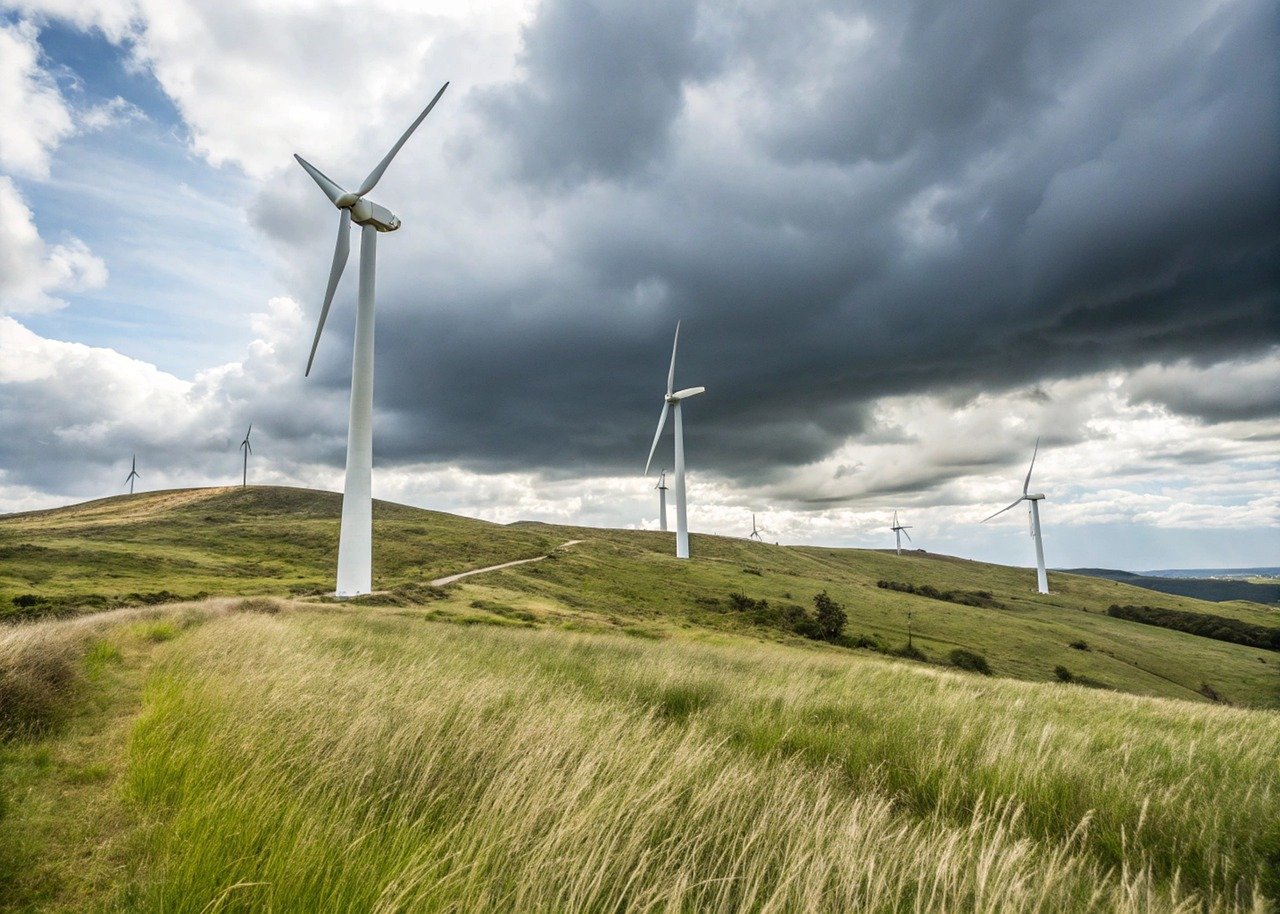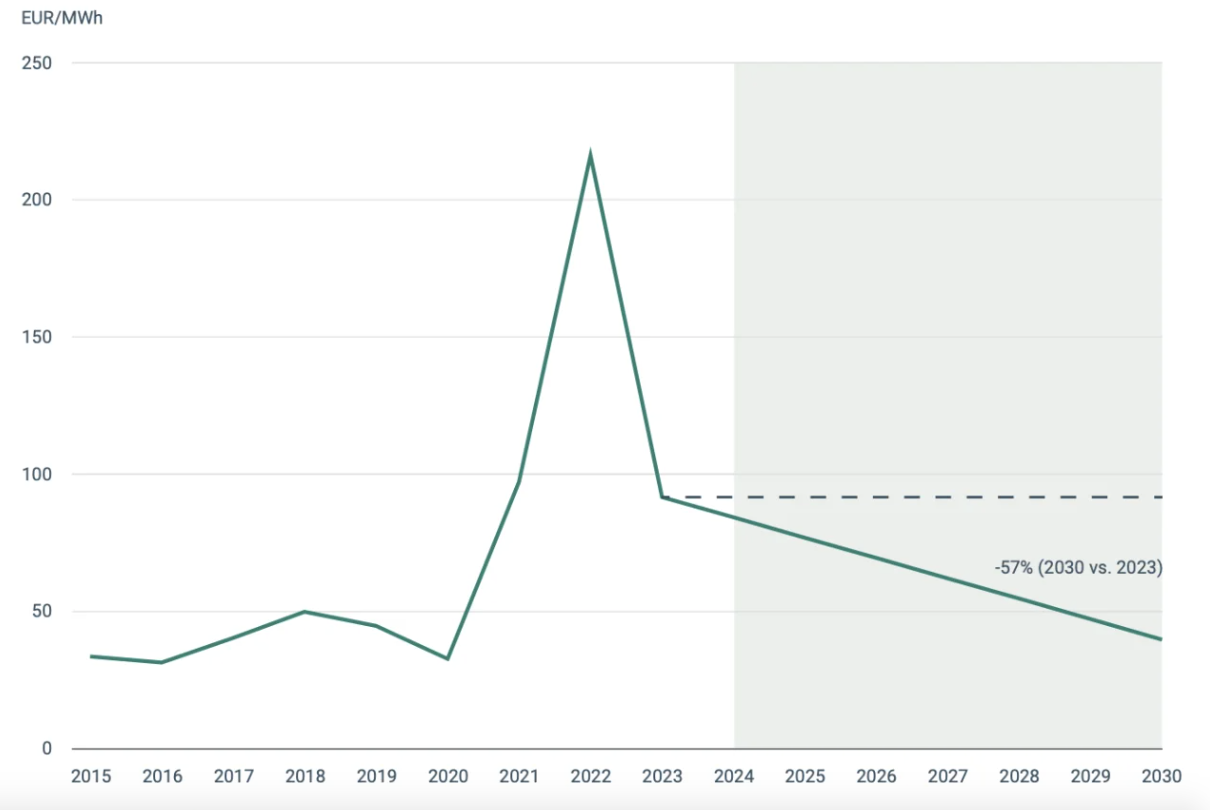
A new study reveals that a community-wide shift toward renewable electricity sources could significantly reduce production costs while strengthening Europe’s energy independence.
Renewables, electrification, and flexibility
While Italy continues to promote nuclear energy as a cure-all for high energy bills, a new report sheds light on the competitive potential of renewables in reshaping the energy system. The findings point to a significant reduction in wholesale electricity prices driven by clean energy.
The report, Renewables, electrification and flexibility – For a competitive EU energy system transformation by 2030, was published today by the European Environment Agency (EEA). It outlines how the European Union has moved rapidly from fossil fuels toward more sustainable energy sources over the past decade, leading to steady and significant reductions in greenhouse gas emissions.
The most recent drop, recorded in 2023, showed emissions falling 37% below 1990 levels and 30.5% below 2005 levels. However, challenges remain, particularly in the heating and transport sectors, where fossil fuels still dominate.
Today, accelerating clean energy and electrification is no longer only a climate or environmental priority. A forward-looking analysis of Europe’s power grid shows that meeting the EU’s 2030 targets for renewables and energy efficiency could reduce variable electricity generation costs by more than half compared to 2023.
“This isn’t just about hitting climate targets,” said Leena Ylä-Mononen, executive director of the EEA. “Shifting to more renewables and electrification is a real opportunity to cut dependence on imported fossil fuels and lower wholesale electricity prices in the medium term, while also boosting Europe’s strategic autonomy in a time of increasing geopolitical uncertainty.”
Lowering energy prices through renewables
In 2023, the average spot price for electricity in the EU was €91.7/MWh. By the third quarter of 2024, high renewable output had already driven prices in Northern Europe down by 28% year-over-year.

According to the agency, continued investment in renewables and energy efficiency to meet 2030 targets could drastically reduce reliance on gas-fired plants for backup, bringing down the EU average spot price by 57% by 2030, to around €39.9/MWh. This downward trend would benefit every EU country and pricing zone.
The hourly electricity market model used in the study, based on the TYNDP 2022 Project Collection, simulates the 2030 grid scenario using approved and planned interconnections and network upgrades.
The model calculates only the day-ahead market price, factoring in fuel and operational costs, CO₂ prices, transmission constraints, and grid interconnections. It does not include taxes or national levies like VAT, surcharges, or excise duties, which are key components of retail electricity prices paid by households.
Spain and Portugal are expected to see the largest reductions in generation costs, with projected drops of 81% and 77%, respectively, from 2023 levels. Italy, which recorded the highest average power price in 2023, is also expected to see wholesale prices fall by over 66%.
Three urgent priorities
To capitalize on this shift, the report identifies three critical priorities. The first is access to capital. Renewable electricity capacity must reach 77% of total installed capacity by 2030, up from just over 50% today. Achieving this requires policymakers to unlock new investment flows through stronger financing mechanisms.
Second, system flexibility must double. Smart, interconnected grids, demand response systems, and energy storage must be deployed quickly to keep the power system stable and balanced.
Third, stronger EU-wide coordination is essential to ensure a secure and cost-effective transformation. Cross-border planning, infrastructure cooperation, flexible energy solutions, resilience strategies, and market integration remain key to reducing inefficiencies and maximizing the benefits of the transition.
“In the medium term,” the report notes, “as average electricity prices fall, it will become harder to compensate investors for the higher upfront costs of expanding renewable capacity and system integration. Policymakers should assess whether current policy tools, including two-way contracts for difference and power purchase agreements (PPAs), will need adjustment to keep renewable energy investment attractive beyond 2030.”